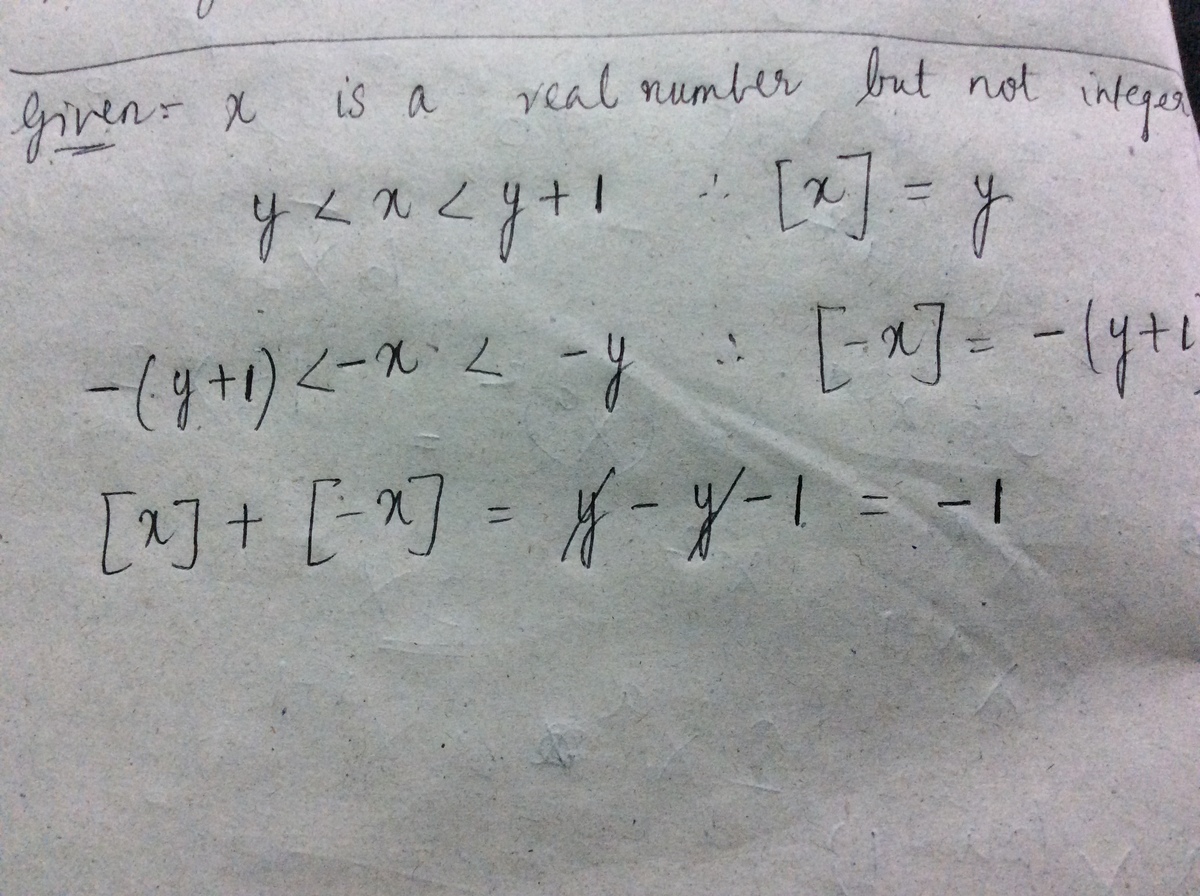Generalizing floor sums 2
Given that is a real number but not an integer, compute .
This section requires Javascript.
You are seeing this because something didn't load right. We suggest you, (a) try
refreshing the page, (b) enabling javascript if it is disabled on your browser and,
finally, (c)
loading the
non-javascript version of this page
. We're sorry about the hassle.

Since x is not an integer, we have a < x < a + 1 − ( a + 1 ) < − x < − a for some integer a.
The floor function returns the greatest integer less than or equal to the argument, so the answer is a − ( a + 1 ) = − 1